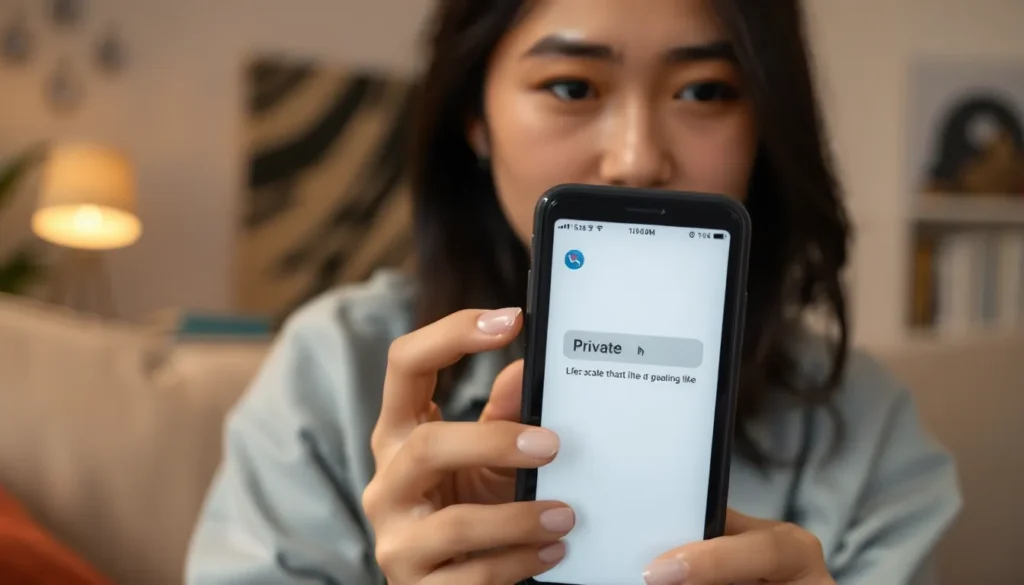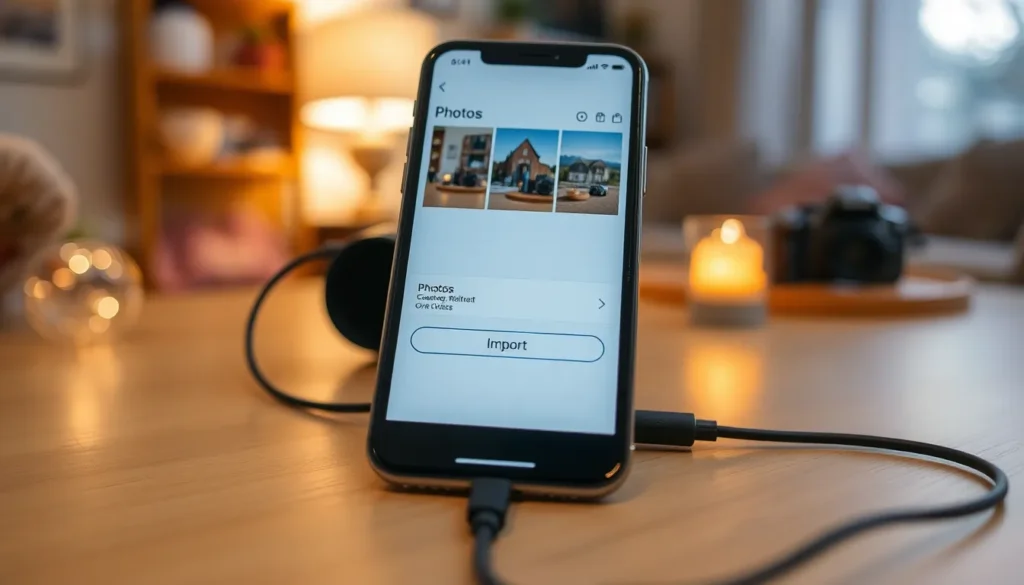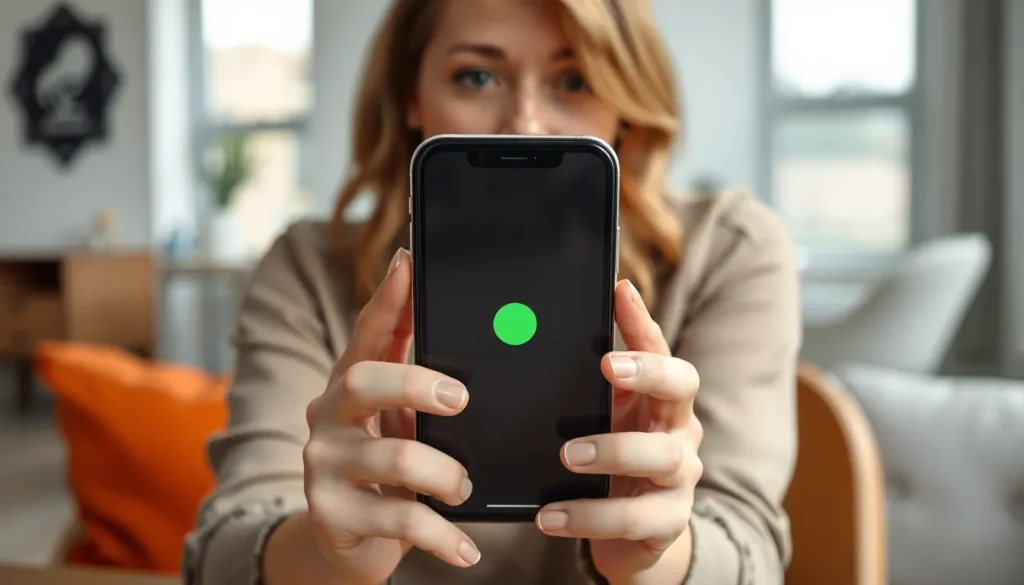Table of Contents
ToggleIn a world where kids seem to be glued to their screens, parents often find themselves in a digital tug-of-war. It’s like trying to wrestle a greased pig—frustrating and slippery! With apps popping up faster than a game of Whac-A-Mole, knowing how to block apps on a kid’s iPhone can feel like a superhero mission. But fear not, because with a few simple steps, you can reclaim control and keep those distractions at bay.
Understanding App Blocking
Managing app access on kids’ iPhones is crucial for promoting healthy screen time habits. Effective app blocking helps reduce distractions and protects children from inappropriate content.
Importance of Blocking Apps
Blocking apps plays a significant role in maintaining focus. Children often engage with various apps that can lead to excessive screen time. Establishing app restrictions encourages a balanced lifestyle. It limits exposure to potentially harmful content and promotes age-appropriate use of technology. Parents can create a safer environment by controlling which apps kids can access. They also empower children to make healthier choices regarding their digital interactions.
Overview of Restrictions on iPhone
iPhones offer robust features for restricting app access. Using the screen time settings, parents can navigate to the content and privacy restrictions. This feature allows for tailored control over various apps and functionalities. They can block specific apps and set time limits, ensuring kids expend less time on distractions. Configurable settings also enable parents to restrict content, including explicit material in apps or media. By understanding these tools, parents enhance their ability to manage kids’ digital experiences effectively.
Methods to Block Apps on Kids iPhone

Blocking apps on a child’s iPhone can significantly enhance screen time management. Parents can employ various methods to achieve this goal.
Using Screen Time Settings
Screen Time provides robust tools for app management. Through Settings, parents can access Screen Time and select “App Limits” to restrict usage on specific apps. Setting time limits promotes healthy usage habits. Additionally, parents can enable “Content & Privacy Restrictions” to block certain apps entirely. Customizing these settings creates a tailored approach to digital safety. It’s essential to review these settings regularly as new apps emerge.
Third-Party Apps for App Blocking
Third-party apps offer additional solutions for blocking unwanted applications. Apps like Net Nanny and Qustodio provide comprehensive monitoring and control options. These tools allow parents to track app usage and enforce restrictions more effectively. With features like real-time alerts and activity reports, they empower parents to stay informed. Choosing reputable third-party options maximizes safety while ensuring a balanced digital environment for children. Regular updates from these apps help adapt to evolving challenges in app management.
Tips for Successful App Management
Effective app management involves clear communication and consistent monitoring. Establishing a strategy strengthens a child’s understanding and trust.
Communicating with Your Kids
Discussing technology use with children fosters understanding. Explain why certain apps are blocked and the importance of healthy screen time. Engaging in open dialogues promotes awareness of potential risks and encourages responsible use of technology. Share specific examples of challenges that arise from unrestricted app usage. Encourage children to express their feelings about these restrictions. By incorporating their perspectives, parents create an environment where kids feel involved in decision-making. Building this rapport helps kids understand the rationale behind app management, reinforcing safer practices.
Monitoring App Usage
Tracking app usage helps parents identify patterns in their child’s behavior. Utilizing Screen Time data offers insights into the duration spent on various apps. Parents can adjust restrictions based on this information, adapting to changes in their child’s interests. Regularly reviewing app activity ensures that children comply with set limitations. Establishing a routine check-in helps parents stay informed on new applications and their potential impacts. Third-party apps, like Net Nanny and Qustodio, provide enhanced tracking features for real-time monitoring. With comprehensive tools, parents can ensure their digital environment remains appropriate for their children.
Common Challenges and Solutions
Parents often encounter obstacles when implementing app restrictions on their kids’ iPhones. Understanding these challenges leads to effective solutions for creating a healthier digital space.
Dealing with Resistance
Children may resist restrictions on their app usage. Open communication helps address their concerns. Explaining the reasons for limitations shows the importance of maintaining focus on school and family time. Instead of presenting restrictions as punishments, framing them as protective measures fosters cooperation. Establishing a dialogue about responsible technology use encourages children to express their thoughts and feelings. This interaction nurtures mutual respect and understanding, increasing the likelihood that kids will accept app limitations without conflict.
Adjusting Settings Over Time
Regularly adjusting settings prevents outdated restrictions from becoming ineffective. As kids grow, their needs and interests change. Monitoring app usage helps identify new trends and activities that arise. By reviewing and updating limits, parents ensure relevance in their approach to screen time. Setting a reminder to revisit restrictions monthly supports ongoing adjustments. Engaging children in conversations about upcoming app releases helps gauge their interests. Adapting settings reinforces a balanced digital experience that aligns with their evolving needs while promoting healthy technology habits.
Blocking apps on kids’ iPhones is a vital step in fostering healthy screen time habits. By utilizing built-in features and third-party tools parents can create a safer digital space for their children. Regularly reviewing settings and maintaining open communication allows parents to adapt to their child’s evolving needs and interests.
This proactive approach not only minimizes distractions but also encourages responsible technology use. With the right strategies in place parents can help their kids navigate the digital world while ensuring a balanced lifestyle. Empowering children with knowledge about app restrictions will lead to healthier choices and a more positive relationship with technology.









